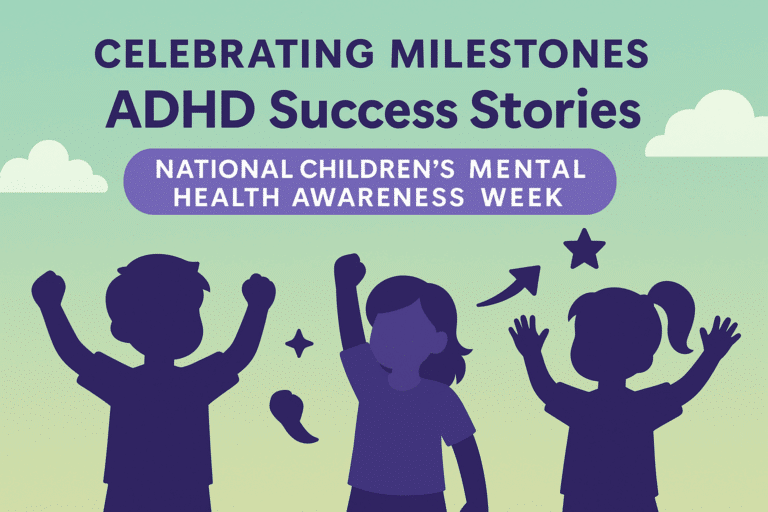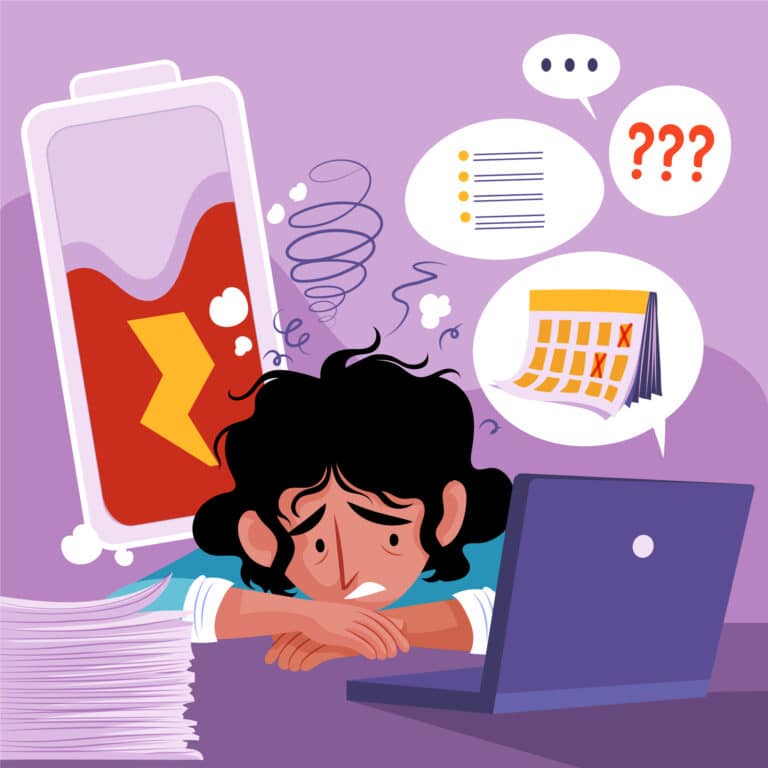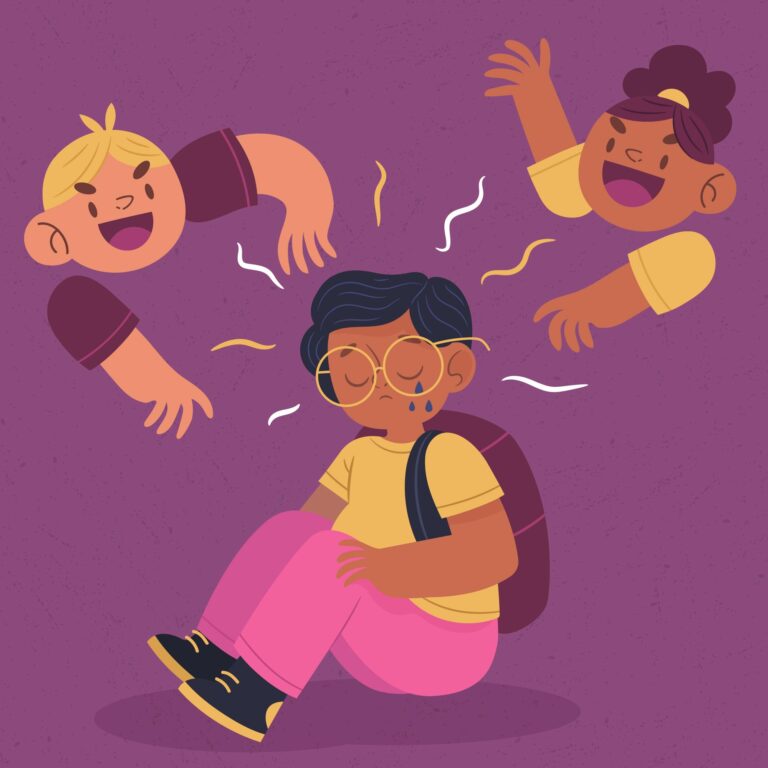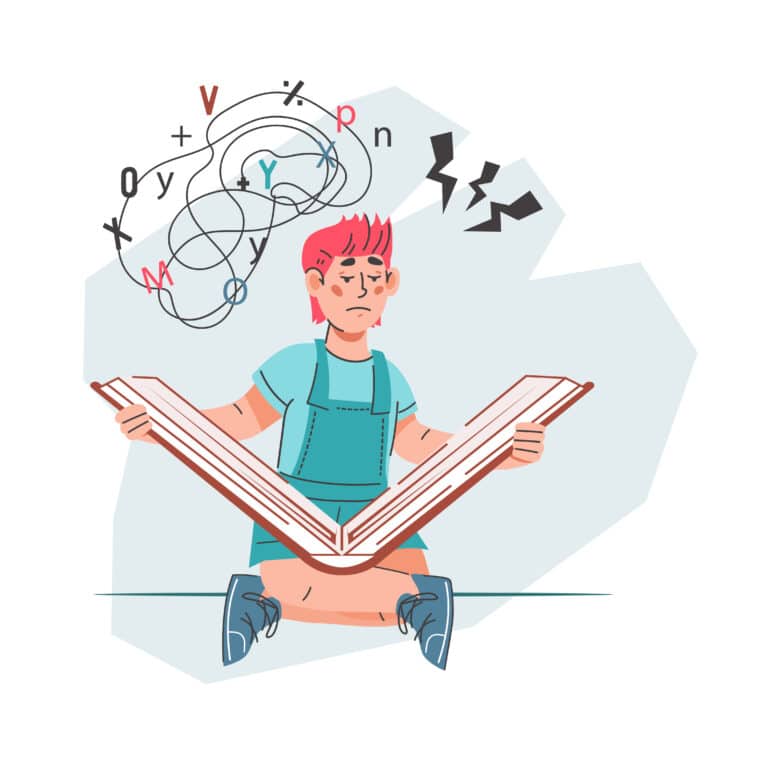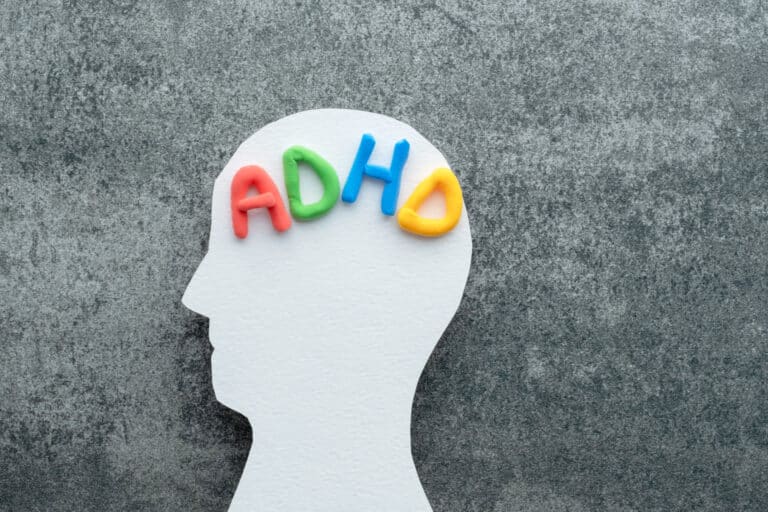Struggling to cope with time changes can amplify anxiety—does this sound like you? In this article, we unfold effective methods to master the shift, spotlighting sleep schedule adjustments and relaxation strategies. As an anxiety therapist with years at the helm, I understand these transitions can be rough. You’ll learn about meditation for anxiety, uncover natural remedies, and explore when to consider beta blockers for anxiety or other panic attack treatments. Together, we’ll tackle this hurdle, guiding you towards a calmer, more regulated lifestyle during time adjustments. This content gives you tangible tactics not only to survive but thrive through each transition.
Understanding How Time Changes Influence Anxiety

As we delve into the ways time changes affect our mental well-being, it’s crucial to understand the role of circadian rhythms. Disruptions to our internal clock can provoke anxiety symptoms, leading to heightened stress or even panic attacks. I’ll guide you through recognizing personal triggers and adapting to time shifts, offering anxiety relief strategies for smoother transitions. Stay tuned to learn how to maintain your balance even when the clocks shift.
The Role of Circadian Rhythms in Mental Well-Being
In my extensive practice, I’ve seen how disruptions to circadian rhythms significantly impact individuals dealing with anxiety. For those who struggle with social anxiety disorder, a misaligned internal clock can exacerbate feelings of apprehension and unease in social situations. I encourage therapy for anxiety that includes techniques to realign these rhythms, ensuring a more stable mental environment for managing symptoms effectively.
My experience has taught me that consistent sleep and wake cycles form the cornerstone of anxiety help. I’ve supported many clients with social anxiety by helping them understand the importance of maintaining regularity in their daily schedules. This foundation of predictability can be particularly soothing, offering a sense of control that is vital in dealing with anxiety during unsettling time shifts.
Why Time Shifts Can Trigger Anxiety Symptoms
During my career, I’ve deciphered why the unease of time changes can spark anxiety symptoms; it’s a disruption that unsettles our internal sense of time. My work, including the Managing Anxiety Course, insists on the significance of routine. Disruptions prompt your nervous system to adapt, sometimes triggering stress responses that manifest as anxiety. It’s not just clockwork; it’s your biological rhythms being stirred, which can be unsettling.
Rooted in “Our Founder’s Story“, there’s a recognition of how these transitions can be taxing on those already grappling with anxiety. As someone who has navigated these troubled waters with clients, I understand how the loss of the familiar throws your mental balance off course. When the rhythm of your life shifts abruptly, anxiety finds fertile ground. Addressing this, I’ve devised strategies that aim to reset your internal clock and help minimize the angst of time changes.
Identifying Personal Triggers During Time Transitions
Through my professional journey, I’ve learned the importance of recognizing personal triggers that set off anxiety during time transitions. For many clients, these triggers are often related to sudden changes in their sleep patterns or daily routines disrupted by the shift in time. I’ve found that identifying these specific causes, be it missing a usual morning jog or not being able to have dinner at the accustomed hour, can be the first step to managing and mitigating the onset of anxiety during these challenging periods.
In my consultations, I emphasize to clients that awareness is key to managing anxiety with time changes. It’s about connecting with your body’s signals and noting when discomfort arises. You might find that shorter daylight hours lead to mood shifts, or that the longer nights affect your sleep quality. I guide clients to observe these nuances, equipping them with the skills to anticipate and prepare for the effects of time transitions, ultimately supporting a more balanced mental state.
Preparing Your Mind and Body Ahead of Time Changes

To navigate the choppy waters of time shifts with less anxiety, you must prepare your mind and body. That’s why I often discuss the importance of easing into a new sleep schedule, arranging daily activities to reduce stress, and setting achievable expectations for adapting to the time change. Each forthcoming section delves deep into these strategies, distilling my experience into practical advice. Together, we’ll explore the benefits of gentle adjustments, structured planning, and realistic goals for acclimatization.
Gradual Sleep Schedule Adjustments
As I’ve advised many clients facing anxiety during time changes, one of the most effective strategies is to adjust your sleep schedule gradually. This could mean going to bed and waking up 15 minutes earlier each day leading up to the time shift. I’ve observed this measured approach ease the transition for my clients, allowing their internal clocks to reset gently, thus reducing anxiety levels significantly.
In my practice, I encourage starting these small adjustments to your sleep routine about a week in advance of the time change. This proactive step has proven to help mitigate heightened anxiety by alleviating the shock to your circadian rhythm. Witnessing clients adopt this simple yet effective method has reinforced its value in maintaining mental balance during what can be a turbulent time.
Planning Daily Activities to Minimize Stress
In my practice, I’ve always placed great emphasis on having a structured plan for daily activities, especially during the lead-up to a time shift. This method of stress management has repeatedly proven its worth. For example, by scheduling relaxation time or light exercise sessions, you can equip your body to cope with changes more resiliently. I have found that when clients integrate such activities into their day, the consistency and intention behind them serve as a buffer against the anxiety that can accompany sudden time changes.
Furthermore, I advise prioritizing and simplifying tasks, deliberately creating a low-stress schedule as the time change approaches. By focusing on the most essential tasks and limiting obligations during the transition, my clients report a noticeable decrease in anxiety levels. The comfort of knowing what to expect each day, with prioritized and manageable tasks, allows for a smoother adaptation to the new time schedule and helps maintain mental composure amidst the change.
Setting Realistic Expectations for Adaptation
Setting realistic expectations for adaptation is essential as it fosters patience with oneself during time changes. I remind my clients that it’s natural for your body to require time to adjust, and it is okay if the adaptation is not immediate. Acknowledging this can significantly diffuse the pressure and reduce anxiety, providing room for gradual improvement without undue stress.
I’ve observed that individuals who accept that adapting to a new schedule may involve a few restless nights or uneven days tend to fare better. Embracing this understanding enables them to approach the transition with a mindset geared towards self-compassion rather than frustration, which ultimately supports a smoother adjustment process and better mental health outcomes.
Implementing Relaxation Techniques to Reduce Anxiety

As we navigate the challenges of time changes, incorporating relaxation techniques can be enormously beneficial in managing anxiety. I find that deep breathing exercises provide an instant calm, anchoring you during moments of unrest. Practicing mindfulness keeps you grounded in the present, not swayed by the uncertainty of changing routines. Finally, progressive muscle relaxation is a tool I often recommend, offering a structured approach to release physical tension that may accompany anxiety.
Deep Breathing Exercises for Instant Calm
In my sessions, I teach deep breathing exercises that can serve as immediate stress relievers, helping you navigate anxiety with each breath taken. Picture your body as a balloon, inhaling slowly through the nose to fill with air, holding momentarily, and then exhaling through the mouth, releasing tension and apprehension. This simple practice, performed regularly, can become a powerful tool for maintaining your equilibrium during the disorienting periods of time change.
I’ve witnessed clients discover deep breathing as a lifeline during spikes in anxiety, particularly when adjusting to daylight saving time or travel across time zones. It’s a grounding technique that requires no special equipment – just a few quiet moments. By focusing on each inhalation and exhalation, clients find themselves anchored in the present, cushioned from the waves of anxiety that time shifts can bring, and more centered as they adjust to the new rhythm.
Practicing Mindfulness and Staying Present
In my professional experience, mindfulness has proven itself a steadfast companion to those wrestling with the unease of time changes. It’s about being acutely aware of the present moment, ensuring your thoughts don’t spiral into worry about future schedules or lost hours. Clients I’ve guided through mindfulness practices often report a significant reduction in anxiety, finding solace in the calm mindfulness ushers in amidst the disarray of a time shift.
Staying present is a technique I advocate for its immediate impact on anxiety management. It involves consciously focusing on the present sensations, thoughts, and emotions without judgment — a practice that anchors you firmly in the now. This strategy effectively mitigates the anxiety that can surge when your routine is disrupted by time changes. By nurturing this skill, you empower yourself to maintain composure and ease uncertainty during these transitions.
Utilizing Progressive Muscle Relaxation
In my experience, progressive muscle relaxation can be a transformative practice for those adjusting to time changes. The method involves tensing and then relaxing different muscle groups in your body, promoting a deep state of relaxation. I’ve instructed clients in this technique, witnessing its power to dissolve the physical manifestation of anxiety, ensuring a more composed transition through time shifts.
Guiding my clients through progressive muscle relaxation offers them a structured path to bodily and mental tranquility. This approach has aided individuals in recognizing and releasing the tension that builds up with the anxiety associated with daylight saving changes or shifts in work schedules. It’s a cornerstone technique that furnishes them with a sense of agency over their anxiety, culminating in a smoother adjustment to time variations.
Enhancing Sleep Quality During Time Adjustments

Ensuring a quality night’s rest is key to managing anxiety amidst time changes. I’ll share my insights on establishing a consistent bedtime routine, crafting a sleep-conducive environment, and curtailing stimulating activities before bedtime. Together, we’ll unpack how these strategies dovetail to foster restorative sleep, equipping you to face time adjustments with a stronger, more balanced approach.
Establishing a Consistent Bedtime Routine
In my practice, I emphasize the benefits of a consistent bedtime routine as a cornerstone of anxiety management during time adjustments. Going to bed and waking at the same time each day can profoundly stabilize circadian rhythms, easing the tension caused by shifts in schedule. My own observations confirm that this regularity lays groundwork for improved rest, essential for those among us combatting heightened anxiety during these periods.
I guide my clients to develop a series of calming pre-sleep activities that signal their body it’s time to wind down, effectively preparing them for restful sleep even amidst the upheaval of a time change. For instance, a warm bath or reading quietly might serve as reliable cues for sleep readiness. These personal rituals, maintained even when the clocks alter, play a pivotal role in buffering against the sleep disruption that so often escalates anxiety.
Creating a Sleep-Conducive Environment
In my professional advice, crafting a sleep-conducive environment is pivotal for mitigating anxiety during time changes. One effective method I’ve recommended to my clients involves creating a sanctuary of tranquility in their bedroom—think dim lighting, comfortable bedding, and a temperature setting conducive to sleep. Minimizing noise or employing white noise machines can also significantly impact sleep quality, facilitating a more seamless adjustment to time changes with less anxiety.
As a seasoned psychologist, I’ve consistently seen how a well-curated environment can ease the mind before bedtime. By removing electronic devices that emit disruptive light, my clients have reported improved sleep onset and quality. A bedroom organized to promote relaxation, with personal touches that signal it’s time to unwind, can be transformational, especially when your body is grappling with the effects of a time shift, fostering a more balanced state both mentally and physically.
Limiting Stimulating Activities Before Bedtime
In my practice, I’ve acknowledged the importance of reducing exposure to stimulating activities before sleep, particularly during periods of time change. Engaging in high-energy tasks or consuming stimulating media can disrupt your sleep patterns, exacerbating anxiety. I advise clients to transition into rest with quiet reading or listening to soothing music — activities that signal the brain to prepare for sleep without overstimulation.
I’ve seen firsthand how this approach can improve sleep onset and quality, cementing it as a key strategy in anxiety and sleep management. By putting away digital devices and choosing calming activities, my clients create a soothing pre-sleep ritual that assists in normalizing their sleep schedule despite the disruptions caused by time changes, thereby reducing overall stress and anxiety levels.
Staying Physically Active to Manage Stress

Staying physically active is a keystone in managing stress and mitigating anxiety that often intensifies with time changes. In the sections that follow, I’ll introduce how incorporating exercise into your routine enhances mood stability, why activities like yoga or tai chi can be remarkably soothing, and the scientific connection between regular exercise and improved mood. These strategies are not just about physical health; they are about fortifying emotional resilience against the fluctuations of our internal clocks.
Incorporating Exercise Into Your Daily Routine
In my practice, I advocate for weaving exercise into daily routines as a potent antidote to anxiety, particularly when facing time changes. A brisk walk or a cycle ride in the morning can invigorate your day, establishing a rhythm that keeps stress at bay. These activities boost serotonin levels, which play a crucial role in mood regulation, making them an essential strategy for anyone aiming to reduce anxiety during disruptive time shifts.
I’ve observed the impact of routine physical activity on clients who manage anxiety precipitated by daylight saving time adjustments. By committing to regular exercise, even something as accessible as yoga in the living room, they’ve cultivated an inner calm that fortifies against the unease that time changes can stir. The consistency of this practice not only enhances physical fitness but also serves as a reliable pillar for emotional stability in times of change.
Exploring Soothing Activities Like Yoga or Tai Chi
In my practice, I’ve found that engaging in soothing activities like yoga or tai chi can be especially effective for managing anxiety during time shifts. These gentle forms of exercise not only promote physical flexibility but also mental clarity, creating a much-needed sense of tranquility as you adapt to new schedules. Clients who incorporate yoga or tai chi into their routines have reported a discernible decline in anxiety levels, benefiting from the meditative aspects of these practices that anchor the mind amidst the flux of time changes.
Personally, I’ve witnessed the profound calming effect that yoga and tai chi can have on individuals coping with the stress of adjusting to daylight saving time or shifts in their routine. With a focus on controlled breathing and deliberate movements, these activities serve as a powerful counterbalance to anxiety, providing a structured way to relax and stay present. Clients often express how these practices enhance their overall well-being, making them a preferred choice for maintaining emotional equilibrium during periods of time fluctuation.
Understanding the Connection Between Exercise and Mood
In my professional experience, the link between exercise and a balanced mood is undeniably strong, a connection that holds particular significance during the unsettling experience of time changes. Engaging in regular physical activity has been shown to release endorphins, natural mood lifters that combat stress and anxiety. I’ve seen the positive effects in my clients, who report a noticeable uplift in their spirits after incorporating exercise into their routines—a testament to its efficacy for mental health.
I believe in the empowering role of exercise to alleviate the heightened worry that can accompany shifts in our circadian rhythms. When the clocks are set forward or back, even a short session of moderate exercise can recalibrate your stress response, helping to maintain emotional steadiness. Through movement, my clients rediscover a sense of control and achievement, reinforcing their capacity to navigate time changes with resilience and calm.
Nourishing Your Body to Support Mental Health

To manage anxiety effectively during time changes, it’s essential to consider not just our minds, but also how we nourish our bodies. In my practice, I’ve identified key nutritional strategies: eating balanced meals for sustained energy, avoiding stimulants that may increase anxiety, and staying hydrated to enhance cognitive function. We’ll delve into these areas, emphasizing the value of each for a more balanced mental state during time adjustments.
Eating Balanced Meals for Sustained Energy
In my practice, I’ve consistently found that a diet consisting of balanced meals contributes significantly to sustained energy levels, which is paramount in managing anxiety during time changes. Choosing whole grains, lean proteins, and fresh vegetables helps maintain steady blood sugar levels, preventing the energy dips that can exacerbate anxiety symptoms. I advise my clients to plan their meals with a focus on these nourishing foods to support a stable mood throughout the day.
I emphasize to those I support that timing and balance of meals can make a discernible difference in their mental well-being during periods of time change. Eating smaller, frequent meals can ensure your body and brain have a steady stream of nutrients, which counters the stress and fatigue that can trigger anxiety. It’s through these simple dietary adjustments that my clients often see a tangible improvement in their ability to adapt to new schedules with greater ease and less discomfort.
Avoiding Stimulants That May Increase Anxiety
In my professional experience, I advise clients to avoid stimulants like caffeine and nicotine, especially in the hours leading up to bedtime. These substances can significantly heighten anxiety and disrupt sleep, hindering your body’s ability to adapt to time changes smoothly. Instead, opting for calming herbal teas can contribute to a more relaxed state, assisting you to navigate the transition with less distress.
When adjusting to a new time schedule, it’s wise to consider how stimulants might amplify existing anxiety or even induce further unease. I’ve seen clients achieve better mental balance by reducing their intake of stimulants, thus enabling a more serene adjustment to the time change. Minimizing these substances can help stabilize your mood, providing a solid foundation for managing anxiety during such transitions.
Staying Hydrated to Enhance Cognitive Function
In my clinical experience, I’ve stressed how essential proper hydration is to cognitive function, particularly during the stress of time changes. When we maintain good hydration, the efficiency of brain function is supported, lessening the mental fog that can aggravate anxiety symptoms. I often remind clients that even mild dehydration can impair attention and memory, obstructing their adjustment to new times.
In guiding clients through adapting to time shifts, I’ve seen marked improvements in their mental state when they consistently consume adequate water. This simple step aids concentration and can diminish the intensity of stress responses, paving a smoother path to adjust to a new schedule. I advise them to carry a water bottle and sip throughout the day, as neglecting this can lead to dehydration and exacerbate feelings of anxiety in a time of change.
Seeking Support and Professional Guidance

As we tackle the management of anxiety during time changes, it’s invaluable to seek support. Communicating with friends and family about your feelings offers a vital outlet, while consulting with a mental health professional opens doors to tailored advice and therapeutic options. Each upcoming segment will explore these avenues, providing you with grounded expertise on how to manage anxiety with meaningful support and guidance.
Communicating With Friends and Family About Your Feelings
In my professional practice, I’ve always highlighted the significance of discussing your feelings with friends and family when managing anxiety due to time changes. This open communication provides a support network that can validate your experiences and alleviate the sense of isolation. Sharing your journey creates an opportunity for empathy and understanding, fostering a supportive environment conducive to mental wellness.
I encourage my clients to articulate their struggles with loved ones, as this can often lead to practical support and the sharing of coping strategies. Based on my experience, when clients convey their anxiety issues with others, it opens a pathway for reciprocal support, facilitating an exchange of ideas and empowering them with additional tools to confront the anxious periods surrounding time adjustments.
Consulting With a Mental Health Professional
In my practice, engaging the expertise of a mental health professional can provide invaluable support for individuals facing anxiety due to time changes. A tailored therapy session offers a safe space to explore underlying causes of anxiety and develop personalized coping strategies. Together with a therapist, you have the opportunity to work through specific challenges presented by the adjustment to a new schedule, bolstering your mental toolbox for future changes.
My direct experience shows that mental health professionals can offer a range of therapeutic options, from Cognitive Behavioral Therapy (CBT) to medication management, each designed to empower you against anxiety’s grip during time transitions. When the usual strategies don’t seem to suffice, consultation with a clinician can introduce new perspectives and methods for managing stress, leading you down a path of greater balance and mental well-being as the clocks change.
Exploring Therapeutic Options for Anxiety Management
In exploring therapeutic options for anxiety management, I often recommend tailored interventions such as Cognitive Behavioral Therapy, which effectively addresses the thought patterns contributing to anxiety during time changes. This personalized approach provides my clients with strategies to reframe negative thoughts and engage in behavior modification, leading to improved coping mechanisms that are especially beneficial when adapting to new schedules.
Moreover, I’ve observed the positive impact of combining therapy with relaxation techniques for a holistic approach to managing anxiety. My clients find value in integrating mindfulness or progressive muscle relaxation with their therapy sessions, reporting a noticeable decrease in their stress levels. This combination equips them with a comprehensive set of tools to effectively navigate the mental challenges time shifts can present.
Frequently Asked Questions
How do time changes affect anxiety levels?
Time changes can heighten anxiety by disrupting sleep patterns and circadian rhythms, which are crucial for mental well-being.
Can adjusting sleep patterns ease anxiety during time changes?
Yes, gradually adjusting your sleep schedule before a time change can lessen anxiety by syncing your circadian rhythm to the new time.
What are effective relaxation techniques for anxiety relief?
Effective relaxation techniques for anxiety include deep breathing exercises, progressive muscle relaxation, and mindfulness meditation to foster calmness and reduce stress.
Why is sleep quality important when adjusting to a new time?
Good sleep quality ensures a balanced circadian rhythm, enhancing adaptation to new time zones and minimizing stress and anxiety during the transition.
Where can I find professional help for time change-related anxiety?
For professional guidance on managing time change anxiety, consider the structured courses at Pathformers, which offer expert-led strategies for a smooth transition.






